Y3. lesson 24. Timbre
Prior learning: None
Duration: 30 minutes
Materials: Recorders
Keywords: Beat, rhythm, singing, chanting, partners, rhymes, circle games.
Difficulty: ![]()
Prepare
Present
Timbre
Practise

Timbre, pronounced "tam-ber," is a crucial element in music that describes a sound's unique quality or colour. It allows us to distinguish between different instruments or voices, even if they play the same note at the same volume. Essentially, timbre is the character or personality of a sound.
Timbre results from the complex interaction of many factors, including the materials used in an instrument, how it's played, and even its physical shape. For example, a violin and a flute might play the same note, but they sound distinctly different because of their timbre. This difference is due to the harmonic content of the sounds they produce and how these sounds start and stop.
 Melodic development
Melodic development
![]() Students add a new pentatonic song to their repertoire.
Students add a new pentatonic song to their repertoire.
- Teach the verse of the song line-by-line to the class.
- When secure, teach the refrain (chorus).
- Initially, many students might not grasp the song's significance when introduced. To enhance their understanding, incorporate the historical context of the song:
- Begin by explaining the Rocky Mountains' significance and historical importance to America. Discuss the early settlers who journeyed with all their belongings in wagons in search of new lives. Highlight the poignant fact that these settlers often left behind family and friends, possibly never to see them again. This context helps students connect more deeply with the song and appreciate its themes, demonstrating how blending history with music education can enrich learning.
1. Rocky mountain, rocky mountain, rocky mountain high.
When you’re on that rocky mountain hang your head and cry.
Refrain
Do, do, do, do, Do remember me. (repeat)
2. Stormy ocean, stormy ocean, stormy ocean wide,
When you’re on that stormy ocean, there’s no place to hide. Refrain
3. Sunny valley, sunny valley, sunny valley low,
When you’re in that sunny valley sing it soft and low. Refrain
 Rhythmic development
Rhythmic development
![]() Students learn about rhythm played on a talking drum.
Students learn about rhythm played on a talking drum.
- These videos explain the use and sounds of the talking drum in Ghana.
- Odai, the talented narrator, talks of how this drum was used to communicate news between villages before the age of technology.
- He shows how specific rhythm patterns mean different things and gives examples.
- Project the map showing Ghana.
 Creative movement
Creative movement
![]() Students dance to music and creatively use ribbons.
Students dance to music and creatively use ribbons.

- Distribute ribbons to the class.
- Start with a warm-up to get students comfortable with their ribbons.
- Play some music from the player and encourage them to explore the space with simple movements, such as waving their ribbons from side to side and up and down.
- Change the music to something with a clear, rhythmic beat. Guide the students to make movements that match the rhythm. For example, swirl the ribbons quickly to fast beats and make slow, graceful arcs to slower melodies.
- Instruct students to move their ribbons in different directions—high, low, left, right—encouraging them to use their whole bodies.
- Challenge them to form shapes in the air with the ribbons, like circles, figure eights, or waves. Ask them to follow specific patterns or to create their own.
- Have students form a line or circle. The leader (you or a rotating student leader) performs a series of movements that the others must mimic, creating a flowing ribbon dance train
- Towards the end, allow students free time to dance however they wish, expressing themselves creatively with the music and ribbons. This is an excellent opportunity for them to showcase their creativity and for teachers to observe the children’s development using their ribbons.
 Listening
Listening
![]() Students use their imagination to discover the timbre of instruments.
Students use their imagination to discover the timbre of instruments.
- Play a track from the player and ask the class the name of the instrument family.
- Ask what is the instrument's name. Guidance might be required.
- Every instrument is shown below in the visual learning module.
- Teach that the timbre of an instrument is like the 'colour' of the sound. For example, the timbre of a flute might be described as silvery and clear, but the timbre of a tuba may be described as deep and raspy
- Choose a student to describe the timbre of the instrument they are hearing. Ask them to be as detailed as possible.
- Students can use words such as metallic, wooden, brassy, hard, soft, clear, silvery, etc.
 Visual learning
Visual learning
![]() Students must investigate the timbre of each instrument shown.
Students must investigate the timbre of each instrument shown.
- Project the images of the instrument players.
- Ask for the name of each instrument. Students will need help with some of these!
- Ask what each instrument is made with, for example, wood or metal (or both).
- Ask what sort of timbre the instrument might have and describe its sound.
- Refer to the listening module above.
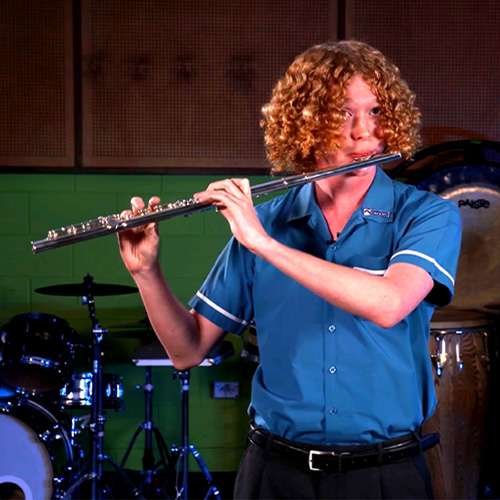
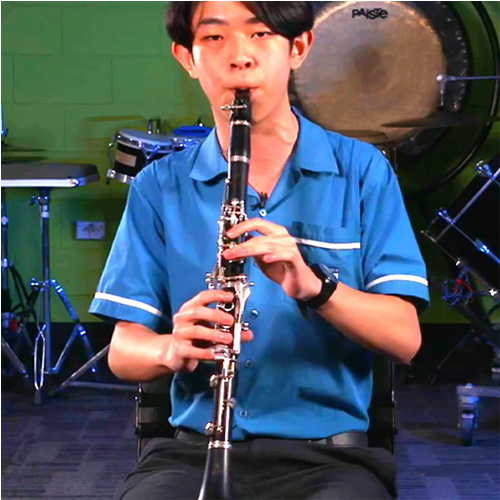
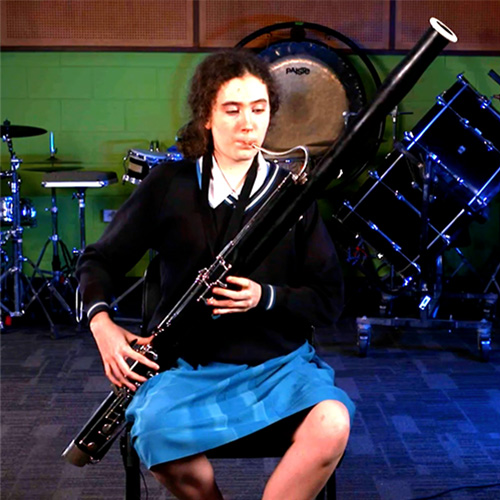
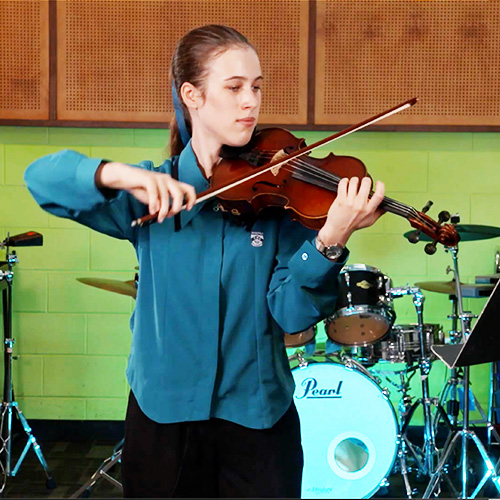
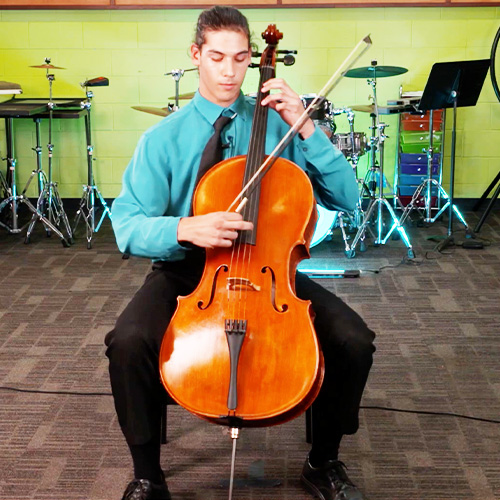
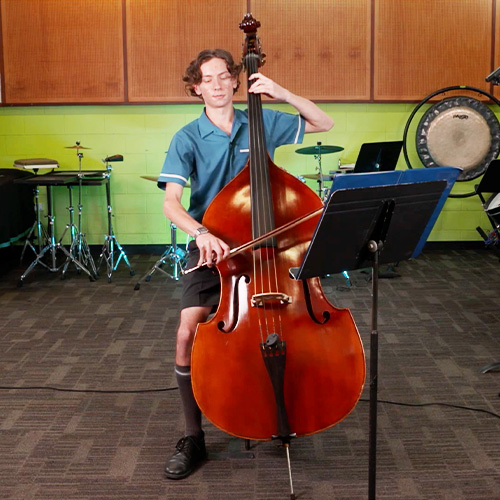
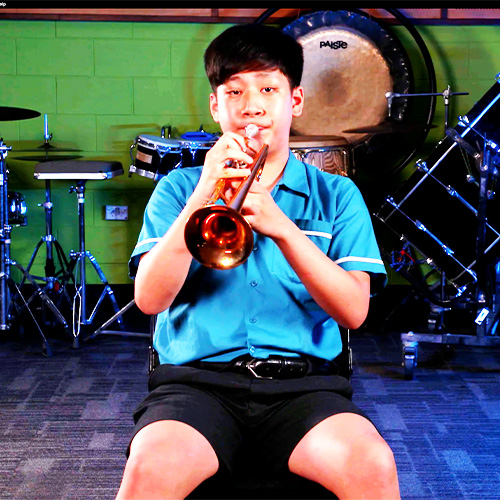
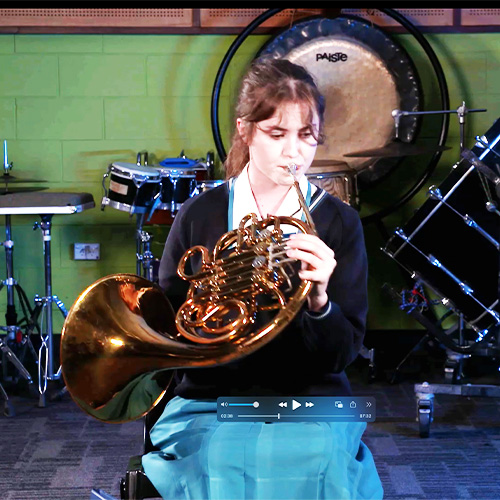
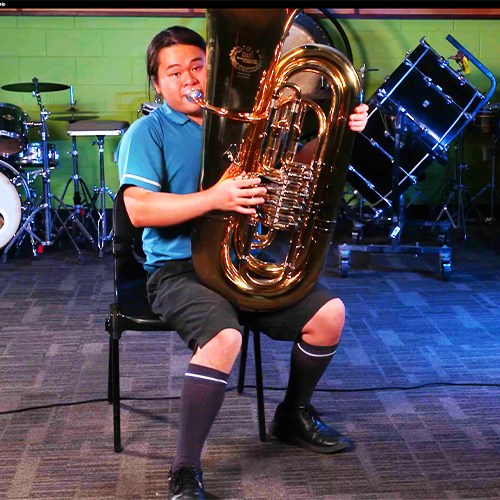
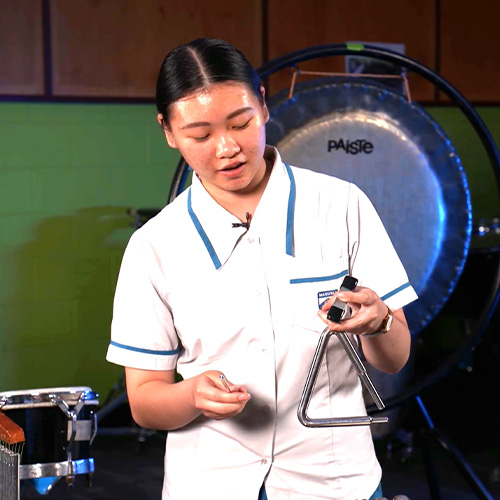
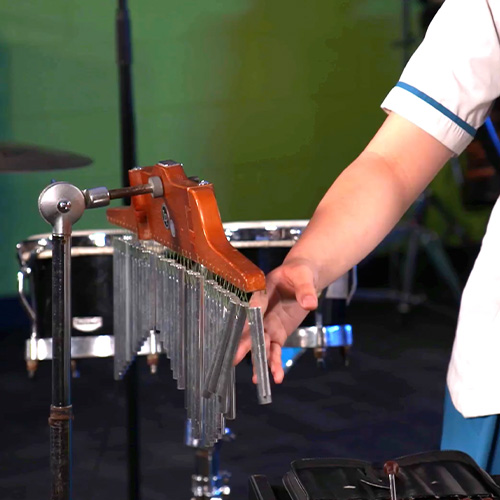
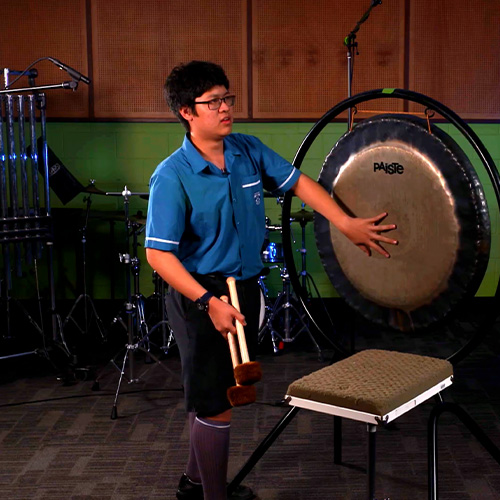
 Instruments
Instruments
![]() Students discover a new song and the semibreve.
Students discover a new song and the semibreve.
- Play the song to the class.
- Before students play in response, explain that there is a new longer note at the end, called a semibreve, that lasts for a count of four.
- Remind students that the double bar line with two dots means to play the song again from the beginning.
 Part work
Part work
![]() Students practise Sally Go Round The Sun in canon.
Students practise Sally Go Round The Sun in canon.
- Divide the class into two groups, such as girls/boys.
- Lead the class in singing the song.
- When secure, ask the first group to begin singing.
- After one measure, conduct in the second group.
- Swap the two groups around.
 Assess
Assess
Suggested lessons
Y1. Beat II

Y1. Beat III

Y1. Beat IV

